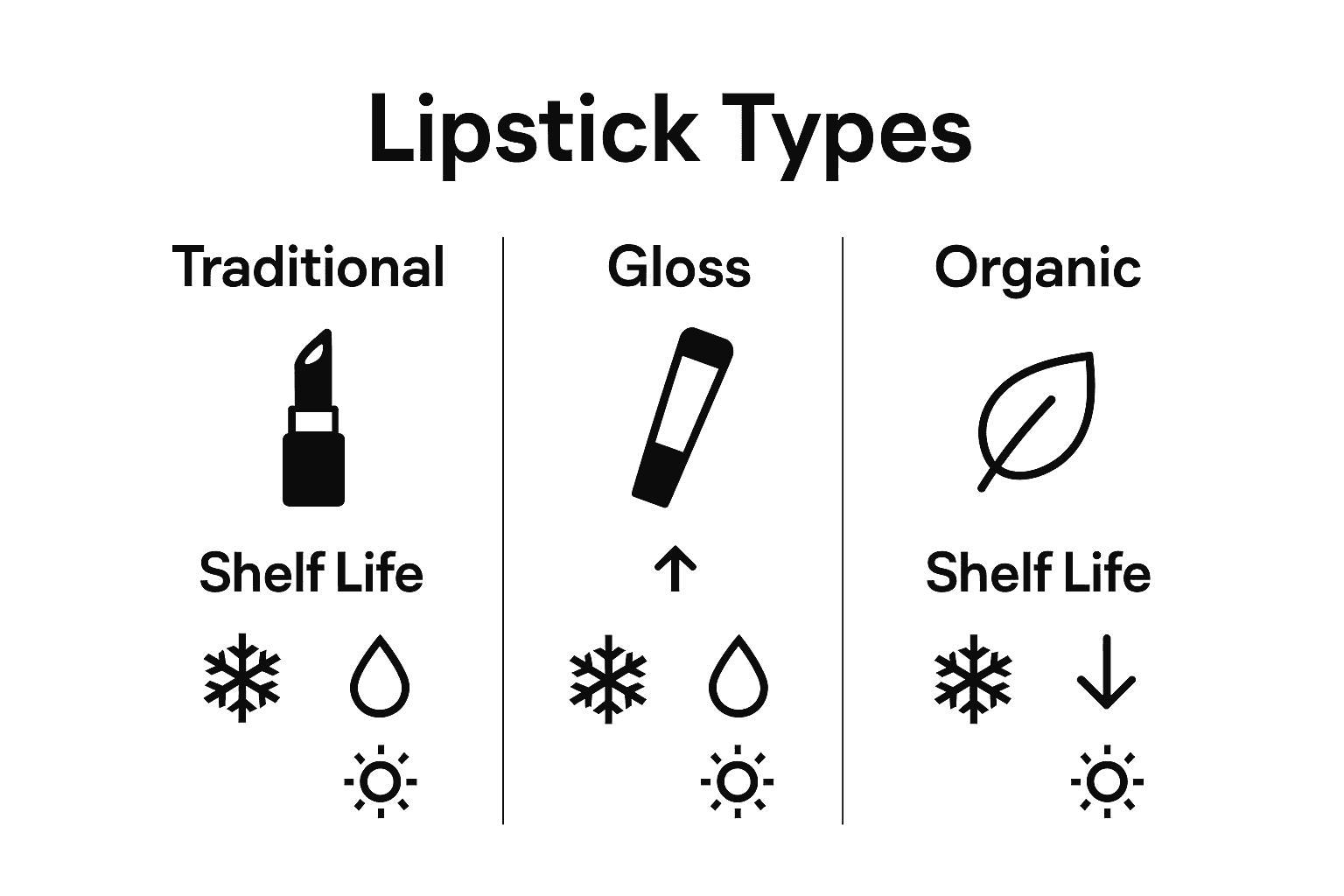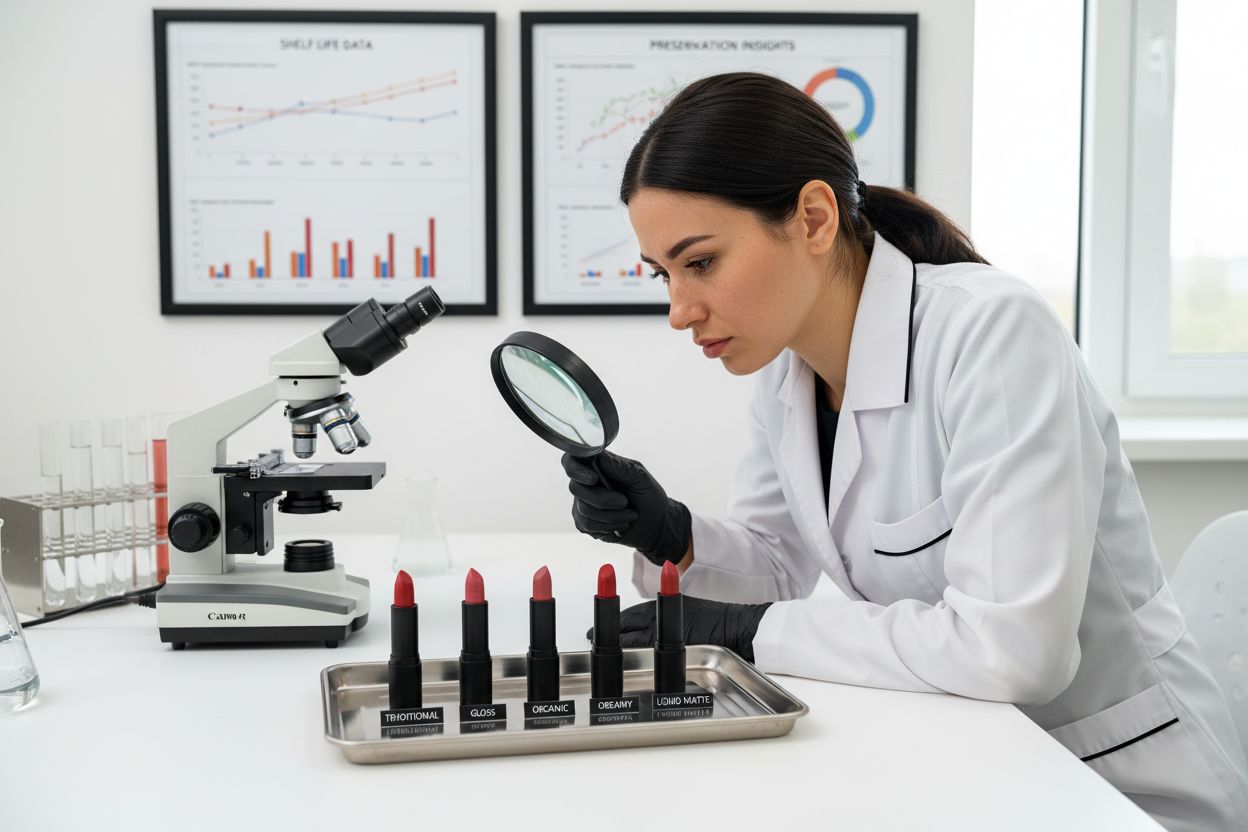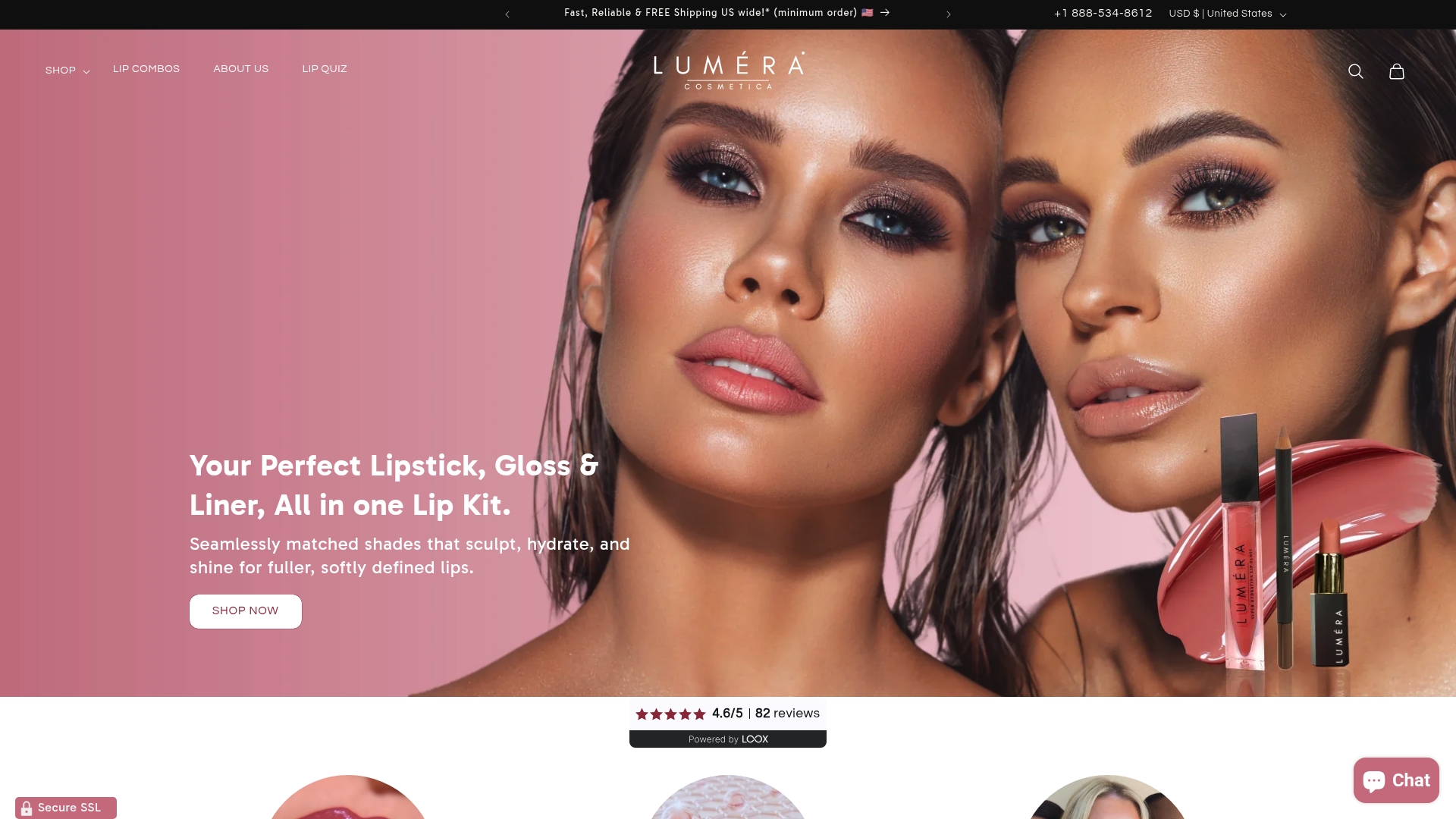Did you know that some lipsticks can last up to five years unopened if stored correctly? Lipstick is more than a makeup essential; it’s an investment in beauty and confidence, so preventing spoilage and keeping it safe matters. Environmental exposure, improper storage, and expired formulas can put your health and favorite shades at risk. Learning the fundamentals of lipstick preservation helps you get the most from every tube and keeps each application as perfect as the first swipe.
Key Takeaways
| Point | Details |
|---|---|
| Lipstick Preservation Importance | Understanding environmental factors is vital for maintaining lipstick quality and safety over time. |
| Storage Strategies | Keep lipsticks in a cool, dark place, managing humidity and temperature to extend shelf life. |
| Expiration Awareness | Opened lipsticks should ideally be used within 12-18 months to ensure safety and performance. |
| Common Preservation Mistakes | Avoid introducing moisture and microorganisms by practicing hygienic application and proper storage techniques. |
Table of Contents
- Lipstick Preservation: Definition And Core Principles
- Types Of Lipsticks And Their Unique Needs
- Proper Storage Techniques For Longevity
- Recognizing Expiry And Safe Usage Periods
- Common Mistakes In Lipstick Preservation
Lipstick Preservation: Definition And Core Principles
Preserving your favorite lipstick isn’t just about keeping it looking pretty - it’s about maintaining its quality, safety, and performance over time. Lipstick preservation involves understanding how environmental factors and storage conditions impact your cosmetic products. According to the FDA’s guidance on cosmetic shelf life, multiple elements can compromise your lipstick’s integrity.
At its core, lipstick preservation means protecting your product from factors that can cause degradation. These critical preservation challenges include:
- Microbial contamination: Bacteria and fungi that can grow in moisture-rich environments
- Chemical breakdown: Preservative components losing their effectiveness
- Environmental exposure: Humidity, heat, direct sunlight, and air circulation that accelerate product deterioration
As research from cosmetic regulatory experts indicates, professional cosmetic manufacturers conduct extensive stability and compatibility testing to ensure product safety. This comprehensive approach involves assessing physical, chemical, and microbiological characteristics to determine a lipstick’s minimum durability or Period After Opening (PAO). By understanding these principles, you can significantly extend your lipstick’s usable life and maintain its original quality. Read more about long-lasting lipstick techniques to complement your preservation strategy.
Types Of Lipsticks And Their Unique Needs
Here’s a comparison of common lipstick types and their preservation needs:
| Lipstick Type | Shelf Life (Opened) | Key Vulnerabilities | Special Storage Tips |
|---|---|---|---|
| Traditional | 18-24 months | Heat Humidity Microbes |
Cool, dry drawer |
| Lip Gloss | 12-18 months | Microbes Light |
Avoid sunlight Tight seal |
| Natural/Organic | 6-12 months | Rapid spoilage Oils rancid |
Extra cool, dark storage |
| Creamy/Balm | 12-18 months | Oil separation Moisture |
Low humidity Consistent temp |
| Liquid Matte | 12-24 months | Air exposure Drying |
Upright storage Clean applicator |
Not all lipsticks are created equal - each type has its own unique preservation requirements and vulnerabilities. Learn about the different lipstick varieties to understand how best to protect your favorite formulations. Lipstick types range from traditional bullet formats to liquid mattes, each with distinct chemical compositions that impact their shelf life and storage needs.
According to research from health experts, different lipstick varieties have varying longevity:
- Traditional Lipsticks: Typically last 18-24 months
- Lip Glosses: Generally survive 12-18 months
- Natural/Organic Formulations: Often have shorter shelf lives due to weaker preservative systems
Natural and creamier lipstick formulations require extra attention.
 Research from cosmetic specialists highlights that oil-based or butter-rich lipsticks are more prone to spoilage. Their organic ingredients can go rancid faster, even if the product remains unopened. This means paying closer attention to storage conditions, avoiding extreme temperatures, and being vigilant about potential changes in texture, smell, or color that might indicate degradation.
Research from cosmetic specialists highlights that oil-based or butter-rich lipsticks are more prone to spoilage. Their organic ingredients can go rancid faster, even if the product remains unopened. This means paying closer attention to storage conditions, avoiding extreme temperatures, and being vigilant about potential changes in texture, smell, or color that might indicate degradation.

Proper Storage Techniques For Longevity
Protecting your lipstick collection requires more than just tossing them into a makeup bag. Strategic storage is crucial for maintaining your lipsticks’ quality, color, and performance. Explore professional lipstick set storage tips to ensure your favorite shades stay pristine and ready to use.
According to research from consumer experts, the environment plays a critical role in lipstick preservation. Your storage strategy should focus on creating optimal conditions:
- Temperature Control: Keep lipsticks between 59-77°F (15-25°C)
- Humidity Management: Store in low-moisture environments
- Light Protection: Keep away from direct sunlight and intense artificial light
Avoid common storage mistakes that can compromise your lipsticks. Bathrooms might seem convenient, but their high humidity and temperature fluctuations can accelerate product degradation. While some suggest refrigeration, this isn’t always ideal - extreme cold can crystallize ingredients and alter lipstick texture. Instead, choose a cool, dark drawer or dedicated cosmetic storage area with consistent temperature and minimal environmental stress.
Recognizing Expiry And Safe Usage Periods
Knowing when to say goodbye to your favorite lipstick isn’t just about aesthetics - it’s a critical health consideration. Lipstick expiration involves more than just tracking time. Learn about advanced lipstick application techniques that can help you maximize your product’s lifespan and recognize potential degradation signs.
According to comprehensive health research, lipsticks have specific safety windows that every beauty enthusiast should understand:
- Unopened Lipsticks: Can last up to 5 years when stored correctly
- Opened Lipsticks: Recommended usage within 12-18 months
- Active Usage Period: Maximum safe use of 24 months post-opening
Research from consumer experts highlights crucial warning signs of lipstick expiration. Watch for telltale indicators like changes in texture, unexpected color shifts, unusual odors, or visible separation of ingredients. These signals suggest bacterial growth and potential health risks. When in doubt, prioritize your skin’s health and replace the product. Remember: no stunning shade is worth a potential skin infection.
Common Mistakes In Lipstick Preservation
Preserving your lipstick isn’t rocket science, but many beauty enthusiasts unknowingly sabotage their favorite products. Preservation pitfalls can transform a premium lipstick into a breeding ground for bacteria and rapid deterioration. Understand the nuances of lip product care to avoid these common mistakes that could compromise your cosmetic collection.
According to FDA guidelines on cosmetic preservation, several critical errors can accelerate lipstick degradation:
- Microbial Introduction: Applying lipstick with unwashed hands
- Temperature Abuse: Leaving lipsticks in hot cars or direct sunlight
- Moisture Exposure: Storing products in humid bathrooms
- Unhygienic Practices: Sharing lipsticks or failing to clean applicators
Expert research from cosmetic specialists warns against desperate attempts to revive dried lipsticks. Resist the temptation to add water or saliva, as these actions introduce harmful bacteria and compromise the product’s integrity. Your lipstick isn’t a miraculous self-healing entity - once its chemical structure breaks down, restoration is impossible. Instead, recognize when it’s time to replace your beloved shade and invest in a fresh, safe product.
Elevate Your Lipstick Longevity With Care and Expertise
Are you tired of seeing your favorite lipstick spoil too soon, fade in color, or lose its smooth texture? The article highlighted key challenges like microbial contamination and chemical breakdown, all leading to shorter lipstick life and compromised safety. Many readers struggle with proper storage or recognize the signs of expiration, risking both the quality of their products and the health of their lips. This does not have to be your experience.
Explore our expertly curated LIP OIL collection for nourishing solutions that protect your lips and your investment. Each formula is designed to help you maintain that freshly applied look, while supporting the well-being of your cosmetics.

Ready to prolong the magic of every lipstick application? Visit Luméra Cosmetica and discover innovative lip products and accessories tailored for maximum preservation. Try now to experience formulas crafted with preservation in mind, and enjoy the confidence of a lip look that truly lasts.
Frequently Asked Questions
How can I extend the shelf life of my lipstick?
To extend the shelf life of your lipstick, store it in a cool, dry place away from direct sunlight and humidity. Keep the temperature between 59-77°F (15-25°C) and ensure the cap is tightly closed after each use.
What are the common signs that my lipstick has expired?
Signs that your lipstick has expired include changes in texture, unusual odors, color shifts, or visible separation of ingredients. If you observe any of these indicators, it is best to discard the product to avoid potential health risks.
Do different types of lipsticks have different shelf lives?
Yes, different types of lipsticks have varying shelf lives. Traditional lipsticks usually last 18-24 months, while lip glosses last around 12-18 months. Natural or organic lipsticks typically have shorter shelf lives, ranging from 6-12 months due to weaker preservative systems.
Is it safe to store lipstick in the refrigerator?
While refrigeration can help maintain some products, it is generally not recommended for lipsticks. Extreme cold can crystallize ingredients and alter the texture. Instead, opt for a cool, dark drawer for optimal storage.

